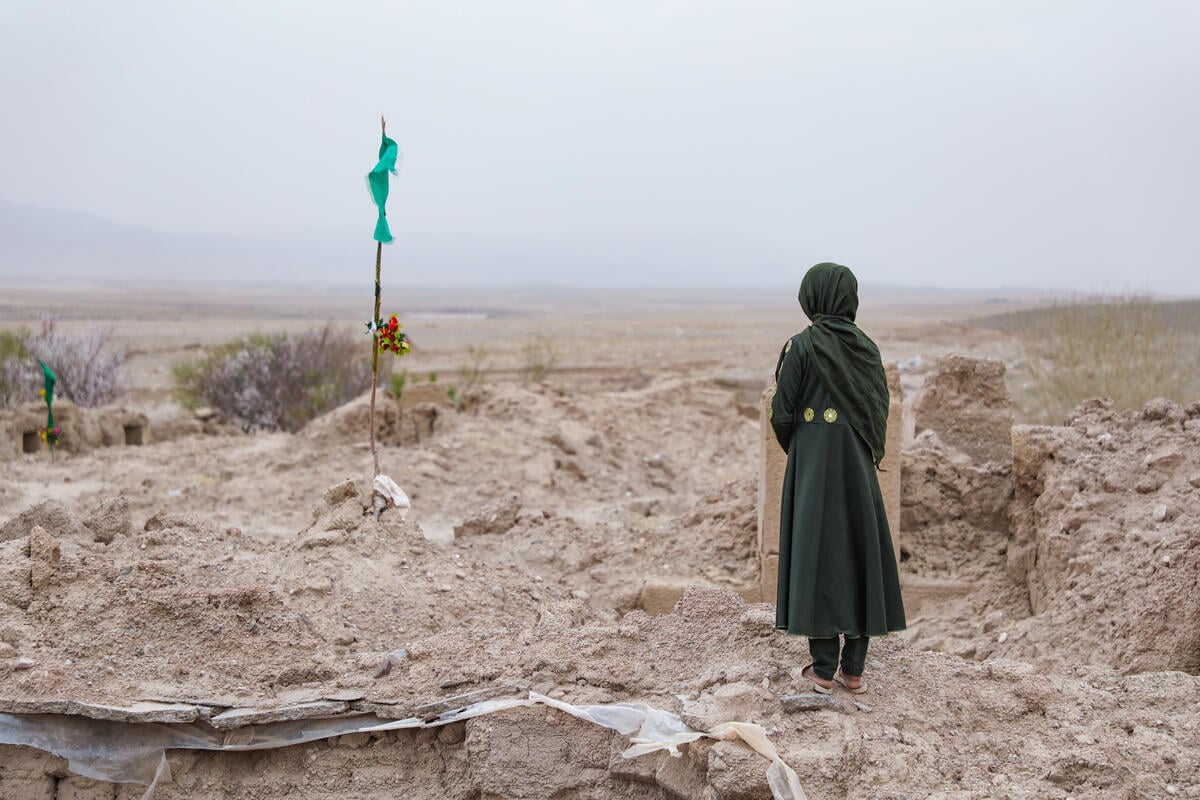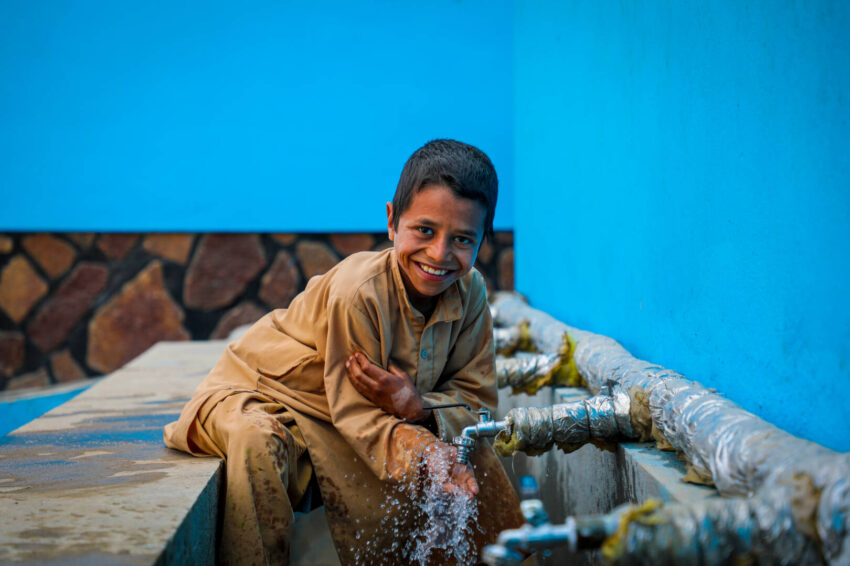Children and families in Afghanistan are facing a deepening humanitarian crisis due to decades of conflict, chronic poverty, and recurring natural disasters, including severe flooding and powerful earthquakes — the deadliest in recent years. These events underscore the enduring hardships in Afghanistan against a backdrop of widespread hunger, a collapsing health system, devastation to schools, and the destruction of family livelihoods.
Afghanistan crisis: Facts, FAQs, and how to help
Explore facts about Afghanistan and frequently asked questions about the humanitarian crisis in Afghanistan, and learn how to help Afghan children and their families.
- Fast facts: Afghanistan crisis
- What’s the latest on the recent earthquake in Afghanistan?
- What’s the current humanitarian situation in Afghanistan?
- What are the reasons behind Afghanistan’s hunger crisis?
- In what ways are Afghan children impacted by the crisis?
- How is the crisis impacting Afghan girls and women specifically?
- Where is World Vision working in Afghanistan?
- How many people has World Vision supported in Afghanistan?
- How can I help Afghan children and their families?
Fast facts: Afghanistan crisis
- Afghanistan is currently facing one of the worst humanitarian crises in the world, worsened by two devastating earthquake events in 2022 and 2023.
- The landlocked country has been entangled in conflict, drought, extreme poverty, and natural disasters.
- The October 2023 earthquakes, including the 6.3 magnitude quake, caused 2,000 deaths and left over 4,000 people injured and 1,400 people displaced in Herat Province in western Afghanistan.
- More than half of Afghanistan’s population, approximately 23.7 million people, is expected to need humanitarian assistance in 2024, as reported by UNHCR.
- According to the World Food Programme (WFP), 12.4 million Afghans face acute food insecurity, with 1 in 4 unsure of where their next meal will come from.
- The WFP reports that acute malnutrition rates are exceeding emergency thresholds in 25 out of 34 Afghan provinces, with nearly half of children under 5 and a quarter of pregnant and breastfeeding women needing urgent nutrition support in the next 12 months.
- Heavy rainfall and flash floods struck northeastern Afghanistan in early May 2024, impacting 21 districts across Badakhshan, Baghlan, and Takhar provinces. The devastation claimed the lives of an estimated 180 people and injured 280.

What’s the latest on the recent earthquake in Afghanistan?
On August 31, 2025, a 6.0-magnitude earthquake struck the province of Kunar, near the city of Jalalabad in neighboring Nangarhar Province, further devastating communities already facing years of conflict, hunger, and previous disasters. Early reports indicate that the quake caused significant damage to homes and infrastructure, with casualties and injuries still being assessed. The death toll has surpassed 1,400.
This quake follows a series of deadly earthquakes in 2022 and 2023, including the October 2023 6.3 magnitude quake that killed 2,000 people in Herat Province. Earthquakes of this scale highlight Afghanistan’s vulnerability to natural disasters and the urgent need for humanitarian support.
World Vision is responding by working with local partners to provide emergency assistance, including food, water, shelter, and child protection services.
“We are greatly saddened by the news of today’s earthquake and the apparent loss of hundreds of lives. We lived through the 2023 Herat Earthquake, and the effects are still being felt today. We know that the most at-risk people, the people who will pay the highest price, will include children and their families, so World Vision will bring our experience and resources to bear upon this new crisis with the steadfast support of our World Vision partnership,” said Thamindri De Silva, National Director for World Vision in Afghanistan.

What’s the current humanitarian situation in Afghanistan?
The humanitarian situation in Afghanistan remains dire, with widespread poverty affecting 48% of the population. Natural disasters and economic instability have exacerbated the country’s vulnerabilities. Millions of Afghans face acute malnutrition and starvation, as the struggling economy fails to support basic necessities.
Women and girls are particularly impacted, facing restrictions on education and employment, which has led to increased child marriage, adolescent childbearing, and mental health issues.
What are the reasons behind Afghanistan’s hunger crisis?
The hunger crisis in Afghanistan is driven by a combination of factors including economic collapse, ongoing conflict, natural disasters, and displacement. Decades of conflict have disrupted agricultural production and displaced millions of people, while natural disasters like droughts and floods have further reduced food availability. Rising food prices and poor access to humanitarian aid have worsened the situation, leaving millions, especially children and vulnerable communities, facing severe hunger and malnutrition.

In what ways are Afghan children impacted by the crisis?
World Vision cares deeply about the needs and rights of children in Afghanistan, and we’re very concerned about their situation. Today, 12.3 million children need lifesaving aid in Afghanistan, according to the U.N. Children’s Fund (UNICEF). And 41% of Afghan children suffer from stunting — being small for their age — a common and largely irreversible effect of malnutrition. This places Afghanistan among the countries with the highest rates of malnutrition for children under 5. Drought and displacement caused by recent conflict have made conditions worse.
Without peace and humanitarian access, Afghanistan’s children are at significant risk of violence, neglect, abuse, exploitation, starvation, and worsening malnutrition. Situations like child marriage, child labor, family separation, and mass displacements — as families leave in search of food — are all likely to worsen. Already, parents in the most desperate situations are making the unimaginable decision to sell one daughter for dowry money so they can buy food for all their children.

How is the humanitarian crisis affecting Afghan girls and women specifically?
Restrictions on education and employment for women and girls have led to increased rates of child marriage, adolescent childbearing, and mental health issues. The lack of opportunities and rights for women significantly contributes to the overall humanitarian crisis.
World Vision is also deeply concerned by the limitations placed on girls’ and women’s access to education. Education is a fundamental right, including for adolescent girls and women. World Vision calls on the international community to make girls’ and women’s access to education a key priority in their engagement in Afghanistan. The safety and well-being of our staff and the people we serve are our priority.

Where is World Vision working in Afghanistan?
In addition to the earthquake-devastated communities in Herat, we’re also serving children and families in the northwestern provinces of Badghis, Faryab, and Ghor — over 4,184 villages combined. Through our long-standing partnership with local community leaders in Afghanistan for many years, we’ve been able to respond to crises and equip these communities to create positive, sustainable change.
How many people has World Vision supported in Afghanistan?
World Vision has supported millions of people with lifesaving aid across Afghanistan. Our efforts delivered food, cash, and livelihood assistance, ensured access to clean water and hygiene services, supported education, and extended vital protection programs. Working in 34 districts and more than 3,200 villages across Herat, Badghis, Ghor, Faryab, and Nangahar provinces, we delivered critical assistance to over 1.2 million people, nearly half of them children, in 2024.
These achievements were made possible through the generosity of our donors and the unwavering dedication of our staff. Together, we have positively impacted the lives of Afghan children, their families, and their communities, offering hope and support in challenging times.
How can I help Afghan children and their families?
- Raise your voice: Join us in calling on Congress to help vulnerable, displaced Afghan families with basic needs and services through organizations committed to staying in Afghanistan — like World Vision.
- Give: World Vision is committed to serving the people of Afghanistan for the long term. Your gift will help deliver essential aid to vulnerable children and families.








